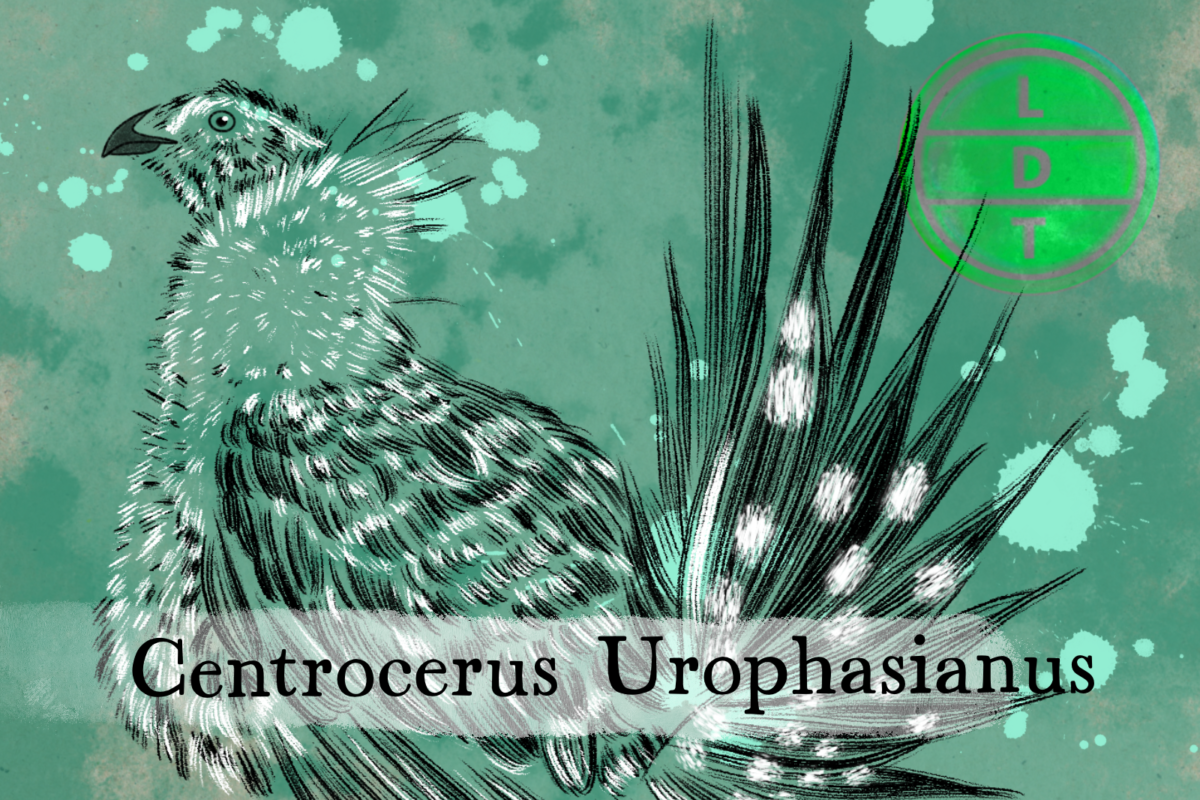“…and today we’re talking about the Charlie Chaplin of chickens. But more on that later.”
In the wide open plains of Saskatchewan, a bulky pheasant puts on a very interesting display. The Greater Sage Grouse male is equipped with some unique tools to let the ladies know he’s got the gains on the plains. The dance party is on at the house of grouse, and as you might expect, it involves strange sounds and undulations. It may make him more visible to predators, but it’s worth it to be able to sow those wild oats here in Life, Death, and Taxonomy.
Description of the Greater Sage-Grouse
- A grouse is a ground fowl like a chicken.
- They have black, brown, and white feathers.
- Male sage-grouses have a fancy white feather scarf.
- They also have yellow sacs on their throats and yellow-green patches above their eyes.
- Males have tail feathers that stick up like a peacock and look pointed.
Measure Up
Welcome to the beloved Measure Up segment. The official listener’s favorite part of the show! The part of the show when we present the animal’s size and dimension in relatable terms through a quiz that’s fun for the whole family. It’s also the part of the show that’s introduced by you when you send in audio of yourself saying, singing, or chittering the words Measure Up into ldtaxonomy at gmail dot com. We don’t have a new Measure Up intro!
Length
- Males are larger at 26 to 30 inches (76.2 cm)
- How many grouses go into the height of the world’s largest thermometer?
- Hint: The giant thermometer is in Baker, California. In reality, it’s a steel sign with digital numbers that was built to commemorate the heat record of 134 degrees in Death Valley in 1913.
- 53.6 grouses. The sign is 134 feet tall.
Weight
- 4 and 7 pounds (3.1 kg)
- How many grouses go into the weight of King Candle?
- Hint: King Candle is a big candle in South Deerfield, Massachusetts at the Yankee Candle Village flagship store. If it was lit, it is theorized that it would burn for 7.5 years.
- 196.7 grouses. The king is 1,377 pounds.
Fast Facts about the Greater Sage-Grouse
The greater sage-grouse lives in North America, from the western U.S. to Alberta and Seskatchewan, Canada.
They don’t migrate very far during the winter, but they will move to lower elevations within their native range to escape the cold.
The greater grouse is the greatest grouse in North America.
Sage grouses like sagebrush… who knew? They enjoy nesting in sagebrush with canopy overhead. Chicks are able to fly after only two weeks, but they only become adept fliers around six weeks.
Sage brush isn’t just their home, it’s also their food. 62% of their diet is made of sagebrush, which is supplemented by other grasses, legumes, lettuce, and herbs. Unlike your backyard chickens, they don’t have muscular gizzards, so they can’t eat seeds.
They may be eaten by coyotes, bobcats, badgers, and birds of prey.
Major Fact: The House of Grouse
Grouses go to mating grounds in large groups called leks. Here, males compete for female attention. Like many birds, the males compete by putting on a display.
During dawn and dusk, they will fan their tails, puff out their chests, and make a really unique sound. Males only patrol a patch of the lek that’s a few feet wide, but they’ll violently defend it from other males.
Males have two large air sacs on the front of their chest that can hold up to 4 liters of air in total. They inflate these sacs and then strut forward quickly like they’re faking someone out and that releases the air in a weird popping sound.
This can be heard almost 2 miles away. Females will choose the males with the best displays and chest pops, so only a few males will mate with all of the females and most of the males will need to re-inflate and up their game for next season.
Ending: So get to lekking, inflate your chest sacs, and get the girl—get all the girls like the greater sage grouse here in LDT.

